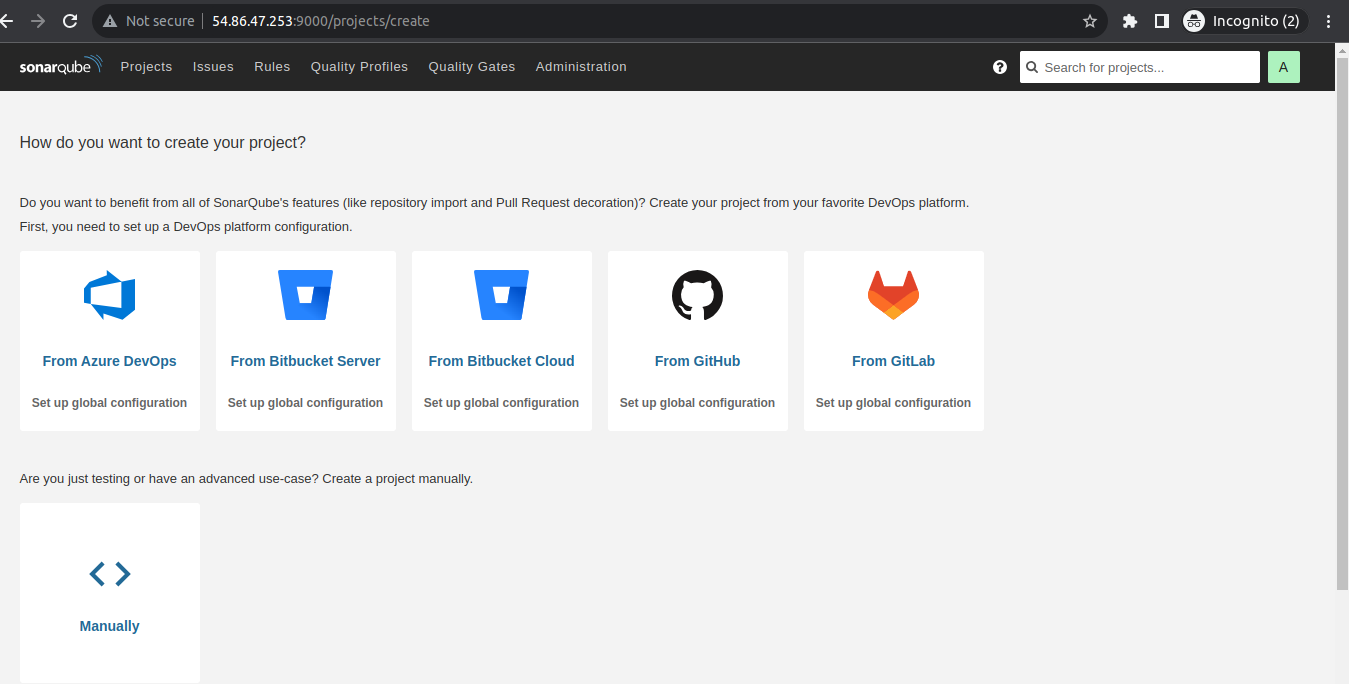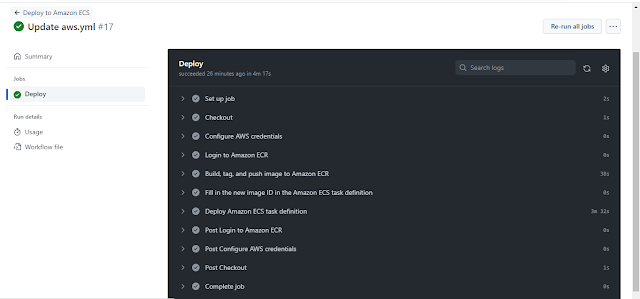Description: In this tutorial, I have explained how to setup SonarQube on Ubuntu 22 and integrate it with GitHub
SonarQube: SonarQube is an open-source tool for code quality analysis. It can scan source code for potential bugs and vulnerabilities and generates a report which allows you to identify issues.
Prerequisites:
- Ubuntu 22 with atlease 2 GB RAM and one CPU
- User with sudo rights
- Domain name to access the server using name
- JDK
- Postgres
Install Open JDK
Install Open JDK 11 # apt-get install openjdk-11-jdk -y Verify the JDK version # java --version
vm.max_map_count=262144 fs.file-max=65536 ulimit -n 65536 ulimit -u 4096
sudo apt update -y sudo sh -c 'echo "deb http://apt.postgresql.org/pub/repos/apt/ `lsb_release -cs`-pgdg main" >> /etc/apt/sources.list.d/pgdg.list' wget -q https://www.postgresql.org/media/keys/ACCC4CF8.asc -O - | sudo apt-key add - sudo apt install postgresql postgresql-contrib -y sudo systemctl enable postgresql sudo systemctl start postgresql
sudo passwd postgres su - postgres createuser sonar psql ALTER USER sonar WITH ENCRYPTED password ''; CREATE DATABASE sonarqube OWNER sonar; GRANT ALL PRIVILEGES ON DATABASE sonarqube to sonar; \q exit
sudo wget https://binaries.sonarsource.com/Distribution/sonarqube/sonarqube-9.8.0.63668.zip sudo unzip sonarqube-9.8.0.63668.zip sudo mv sonarqube-9.8.0.63668 /opt/sonarqube sudo groupadd sonar sudo useradd -d /opt/sonarqube -g sonar sonar sudo chown sonar:sonar /opt/sonarqube -R
sonar.jdbc.username=sonar sonar.jdbc.password=sonar.jdbc.url=jdbc:postgresql://localhost:5432/sonarqube sonar.web.javaAdditionalOpts=-javaagent:/opt/sonarqube/extensions/plugins/sonarqube-community-branch-plugin-1.14.0.jar=web sonar.ce.javaAdditionalOpts=-javaagent:/opt/sonarqube/extensions/plugins/sonarqube-community-branch-plugin-1.14.0.jar=ce sonar.web.host=0.0.0.0 ### if you want to access the sonar using external ip using port number
[Unit] Description=SonarQube service After=syslog.target network.target [Service] Type=forking ExecStart=/opt/sonarqube/bin/linux-x86-64/sonar.sh start ExecStop=/opt/sonarqube/bin/linux-x86-64/sonar.sh stop User=sonar Group=sonar Restart=always LimitNOFILE=65536 LimitNPROC=4096 [Install] WantedBy=multi-user.target
Install dependencies # apt install curl gnupg2 ca-certificates lsb-release ubuntu-keyring -y Import Nginx GPG signing key # curl https://nginx.org/keys/nginx_signing.key | gpg --dearmor \ | sudo tee /usr/share/keyrings/nginx-archive-keyring.gpg >/dev/null Add Nginx stable repository # echo "deb [signed-by=/usr/share/keyrings/nginx-archive-keyring.gpg arch=amd64] http://nginx.org/packages/ubuntu `lsb_release -cs` nginx" | sudo tee /etc/apt/sources.list.d/nginx.list Update the package repository # apt update Install nginx # apt install nginx Start nginx service # systemctl start nginx
server { listen 80 default_server; server_name sonarqube.techservergloabal.shop; return 301 https://$server_name$request_uri; } server { listen 443 ssl http2; server_name sonarqube.techservergloabal.shop; http2_push_preload on; # Enable HTTP/2 Server Push ssl_certificate /etc/letsencrypt/live/sonarqube.techservergloabal.shop/fullchain.pem; ssl_certificate_key /etc/letsencrypt/live/sonarqube.techservergloabal.shop/privkey.pem; ssl_trusted_certificate /etc/letsencrypt/live/sonarqube.techservergloabal.shop/chain.pem; ssl_session_timeout 1d; ssl_protocols TLSv1.2 TLSv1.3; ssl_ciphers 'ECDHE-ECDSA-AES256-GCM-SHA384:ECDHE-RSA-AES256-GCM-SHA384:ECDHE-ECDSA-CHACHA20-POLY1305:ECDHE-RSA-CHACHA20-POLY1305:ECDHE-ECDSA-AES256-SHA384:ECDHE-RSA-AES256-SHA384'; ssl_prefer_server_ciphers on; ssl_session_cache shared:SSL:50m; ssl_stapling on; ssl_stapling_verify on; access_log /var/log/nginx/sonarqube.access.log main; error_log /var/log/nginx/sonarqube.error.log; location / { proxy_set_header Connection ""; proxy_set_header Host $http_host; proxy_set_header X-Real-IP $remote_addr; proxy_set_header X-Forwarded-For $proxy_add_x_forwarded_for; proxy_set_header X-Forwarded-Proto $scheme; proxy_http_version 1.1; proxy_pass http://127.0.0.1:9000; } }
GitHub API URL: https://api.github.com/
Client ID: You can find from the GitHub App page in github.com
Private Key : Generate private key from the GitHub Apps

























































